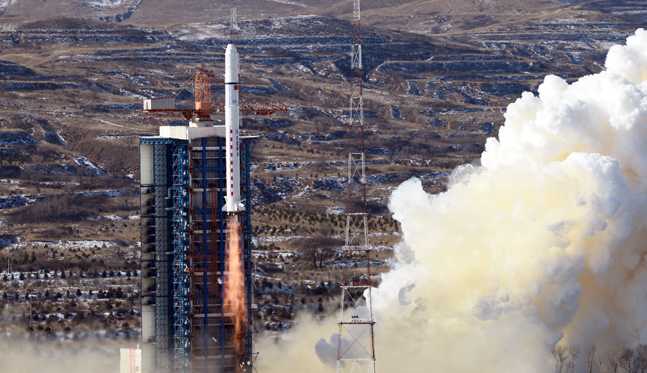China's New Earth-Observation Satellites in Unexpected Orbits: Report


Two commercial Earth-observation satellites launched by China on Wednesday (Dec. 28) are not in their intended orbits, according the launch news website Spaceflight Now.
Citing tracking data from the U.S. military, Spaceflight Now reports that China's two new SuperView 1 satellites (also known as Gaojing 1) are flying in lower-than-expected orbits. The satellites launched into space at 11:23 a.m. Beijing time Wednesday (0323 GMT or 10:23 p.m. EST on Tuesday) from China's Taiyuan Satellite Launch Center and are currently in an "egg-shaped" orbit that ranges between 133 miles and 325 miles (214-524 kilometers) above Earth, Spaceflight Now reports. The satellites were expected to be delivered into a 300-mile-high (500 km) orbit by their Long March 2D rocket. [China in Space: The Latest News]
"The satellites would likely re-enter Earth's atmosphere within months in such a low orbit, and it was unclear late Wednesday whether the craft had enough propellant to raise their altitudes," Spaceflight Now reports.
You can learn more details about China's commercial SuperView 1 satellites in Spaceflight Now's full story here.
The Long March 2D launch of the two satellites followed just one week after China's successful launch of TanSat, a carbon dioxide mapping satellite, aboard a Long March 2D rocket on Dec. 21 from the country's Jiuquan satellite launch center. The country also launched the next-generation weather satellite Fengyun-4 aboard a Long March 3B rocket on Dec. 10 from the Xichang satellite launch center.
Email Tariq Malik at tmalik@space.com or follow him @tariqjmalik and Google+. Follow us @Spacedotcom, Facebook and Google+. Original article on Space.com.
Breaking space news, the latest updates on rocket launches, skywatching events and more!

Tariq is the award-winning Editor-in-Chief of Space.com and joined the team in 2001. He covers human spaceflight, as well as skywatching and entertainment. He became Space.com's Editor-in-Chief in 2019. Before joining Space.com, Tariq was a staff reporter for The Los Angeles Times covering education and city beats in La Habra, Fullerton and Huntington Beach. He's a recipient of the 2022 Harry Kolcum Award for excellence in space reporting and the 2025 Space Pioneer Award from the National Space Society. He is an Eagle Scout and Space Camp alum with journalism degrees from the USC and NYU. You can find Tariq at Space.com and as the co-host to the This Week In Space podcast on the TWiT network. To see his latest project, you can follow Tariq on Twitter @tariqjmalik.
